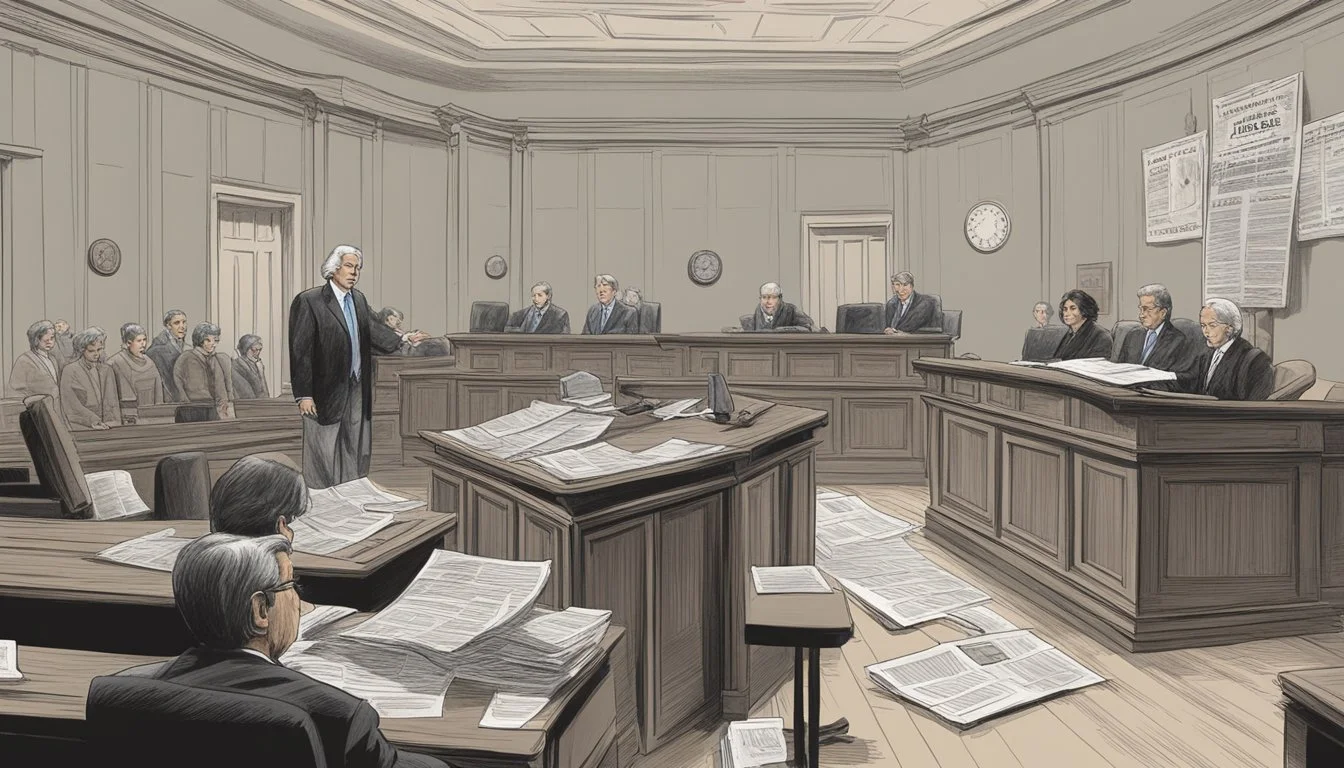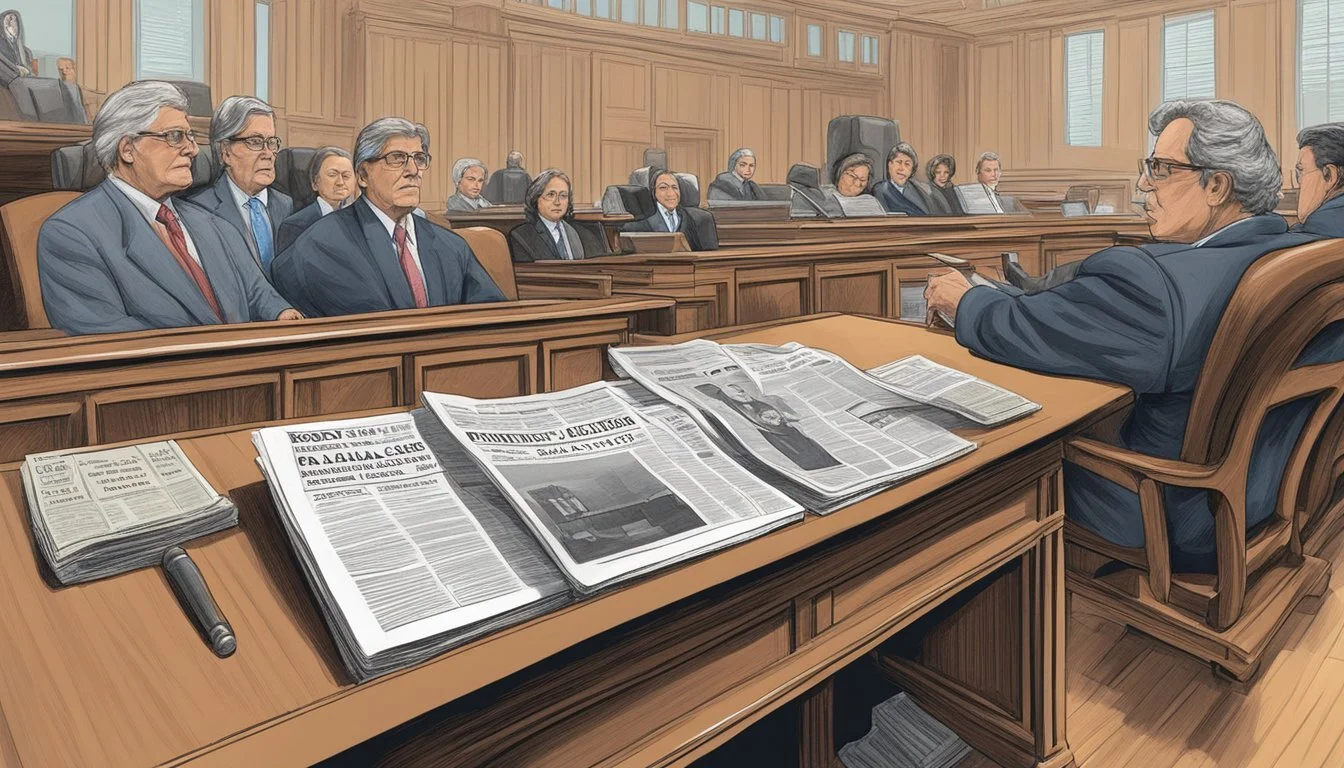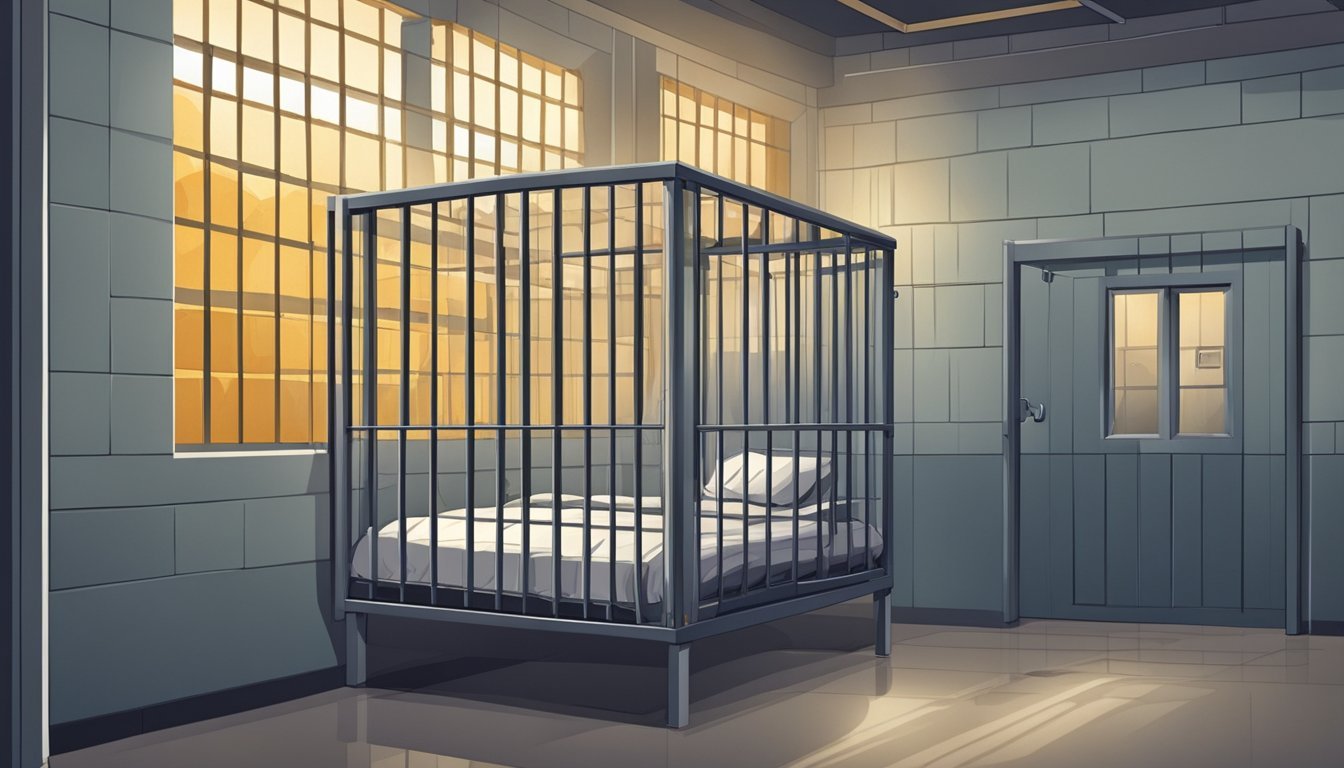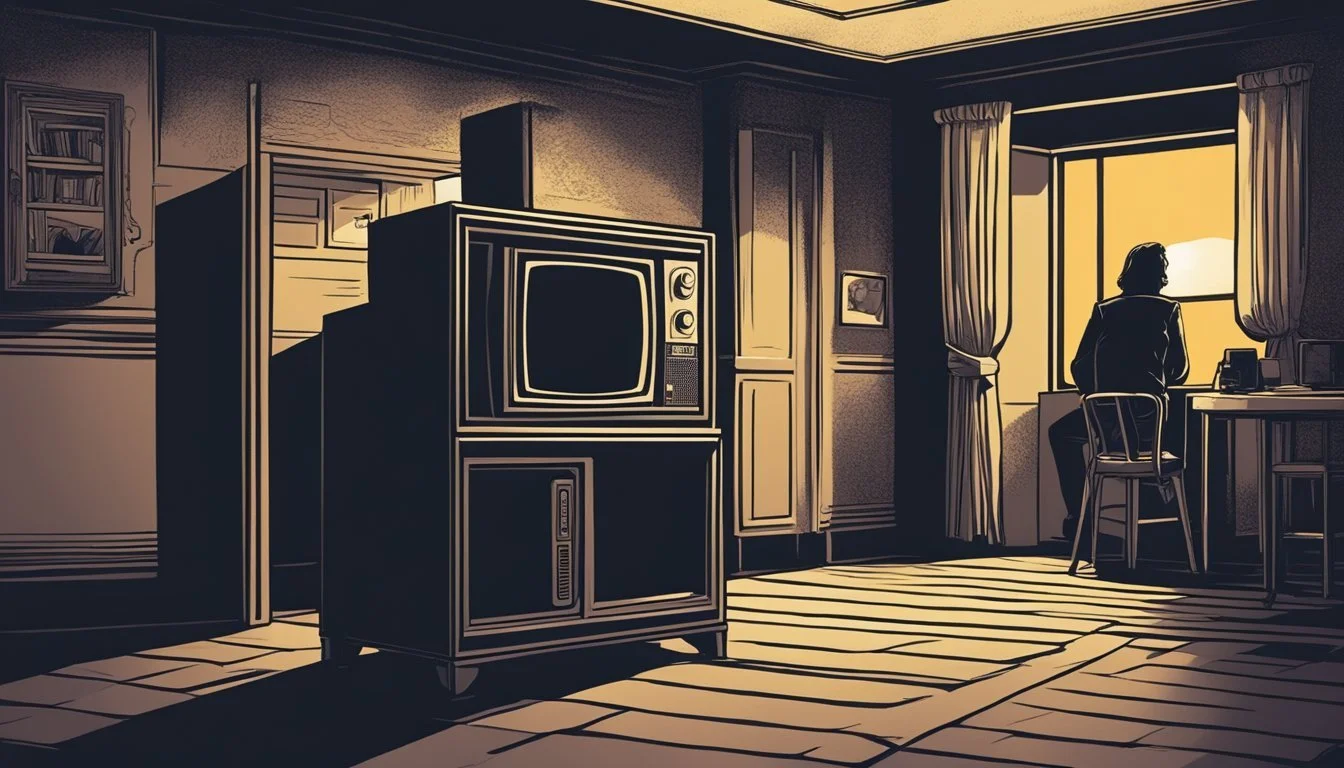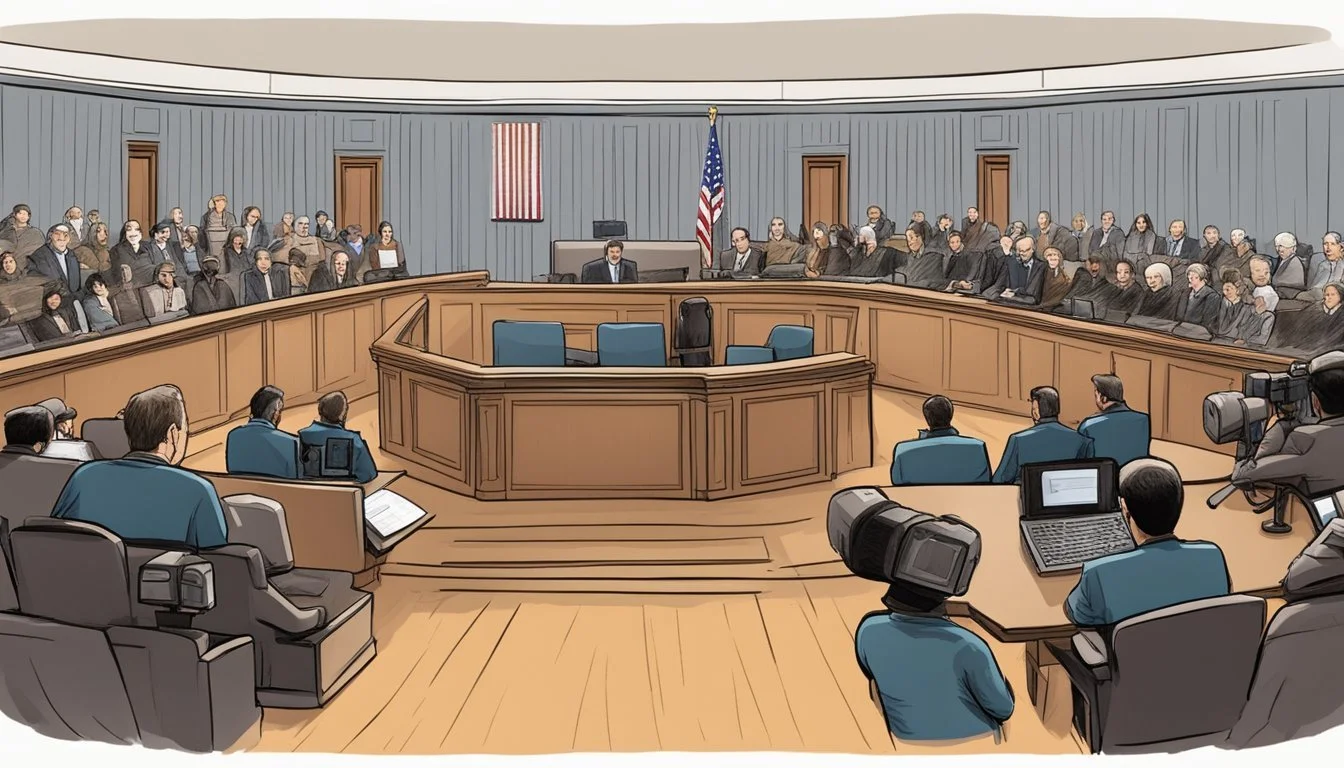Rodney Alcala's Dating Game Over: Killer's Death Row Natural Causes
Serial Murderer Dies at 77
Rodney Alcala, known as the "Dating Game Killer," died of natural causes at age 77 while on California's death row. Alcala gained notoriety for his 1978 appearance on the TV show "The Dating Game" amid a string of brutal murders in the 1970s.
Convicted of killing seven people, including 12-year-old Robin Samsoe, Alcala's actual victim count may be much higher. He received the death penalty in 2010 for five California murders. Investigators believe he may have killed up to 130 people across the country.
Alcala's death on July 24, 2021 at a hospital in Kings County marked the end of a dark chapter in criminal history. His passing denied closure to families of potential undiscovered victims, leaving many questions unanswered about the full extent of his crimes.
Life and Crimes of Rodney Alcala
Rodney Alcala's criminal career spanned decades, leaving a trail of victims across multiple states. His intelligence and charm masked a dark, violent nature that led to numerous murders and sexual assaults.
Early Life and Background
Rodney James Alcala was born on August 23, 1943, in San Antonio, Texas. His family moved to Mexico when he was young, later returning to the United States. Alcala's father abandoned the family, which reportedly had a significant impact on him.
He joined the U.S. Army in 1960 but was discharged after a nervous breakdown. Alcala then attended UCLA, where he studied film under Roman Polanski. This period marked the beginning of his interest in photography, a skill he would later use to lure victims.
The Start of Criminal Activities
Alcala's criminal activities began in the late 1960s. In 1968, he was arrested for the rape and beating of an 8-year-old girl in Los Angeles. He fled to the East Coast, using the alias John Berger and working as a counselor at a New Hampshire arts camp.
In 1971, Alcala was added to the FBI's Most Wanted list. He was arrested in 1971 after being recognized by two campers. Surprisingly, he only served 34 months in prison due to his victims' reluctance to testify.
After his release, Alcala continued his criminal activities. He was arrested again in 1974 for assaulting a 13-year-old girl but was paroled after two years.
The Dating Game Appearance
In 1978, at the height of his killing spree, Alcala made a bizarre appearance on the popular TV show "The Dating Game." He was introduced as a "successful photographer" and won the competition.
The woman who chose him, however, refused to go on a date with him, saying she found him "creepy." This appearance earned him the nickname "The Dating Game Killer" in later years.
Capture and Trials
Alcala's reign of terror came to an end in 1979 when he was arrested for the murder of 12-year-old Robin Samsoe in California. Subsequent investigations linked him to numerous other murders.
Over the following decades, Alcala faced multiple trials. He was convicted of seven murders in California and New York, with sentences including death and 25 years to life. Authorities suspect he may have killed up to 130 people.
Alcala's trials were notable for his decision to act as his own attorney and his bizarre behavior in court. He died of natural causes on July 24, 2021, at the age of 77, while on death row in California.
Victims of Rodney Alcala
Rodney Alcala's reign of terror left a trail of confirmed victims and many unsolved cases potentially linked to him. Investigators continue to uncover new information even after his death.
Recognized Victims
Tali Shapiro, just 8 years old, survived Alcala's 1968 attack in Los Angeles. Ellen Jane Hover disappeared in New York in 1977. Her remains were found in 1978. Cornelia Crilley, a TWA flight attendant, was murdered in her Manhattan apartment in 1971.
Robin Samsoe, 12, vanished from Huntington Beach in 1979. Her partial remains were later discovered. Christine Ruth Thornton was 6 months pregnant when she was killed in Wyoming in 1977. Her body wasn't found until 1982.
Unsolved Cases and Possible Connections
Authorities suspect Alcala in numerous unsolved murders across the United States. He traveled extensively between New York and California in the 1970s. Investigators believe he may be responsible for deaths in Seattle, San Francisco, and Arizona.
DNA evidence has linked Alcala to some cold cases. However, many remain unresolved due to lost evidence or inconclusive results. His photo collection, containing over 1,000 images, may hold clues to additional victims.
Posthumous Victim Identification Efforts
Law enforcement agencies continue to investigate Alcala's potential victims. They've released portions of his photo collection to the public, hoping to identify more individuals. Some families have come forward with new information since his death.
Forensic advancements may help solve lingering mysteries. Improved DNA testing could link Alcala to more cold cases. Investigators in multiple states are revisiting unsolved murders from the 1970s, looking for connections to the Dating Game Killer.
Arrest, Prosecution, and Appeals
Rodney Alcala's decades-long crime spree came to an end with his arrest in 1979. What followed was a complex legal saga involving multiple trials, convictions, and appeals across several states.
The Investigation and Arrest
In July 1979, police arrested Rodney Alcala for the murder of 12-year-old Robin Samsoe in California. Investigators found Samsoe's earrings in a Seattle storage locker rented by Alcala. This discovery led to a search of his Monterey Park home, where police uncovered a trove of photographs and jewelry believed to belong to other victims.
Alcala's arrest came after years of evading capture. He had previously been convicted of assault in 1972 but was paroled after less than two years. This early release allowed him to continue his killing spree undetected for several more years.
Legal Proceedings and Convictions
Alcala faced his first trial for Samsoe's murder in 1980. He was convicted and sentenced to death. However, this conviction was overturned in 1984 due to improper admission of evidence about his prior crimes.
A second trial in 1986 again resulted in a conviction and death sentence. This verdict was also reversed in 2001 on similar grounds. Alcala's third trial began in 2010, this time for five murders in California:
Robin Samsoe (12)
Jill Barcomb (18)
Georgia Wixted (27)
Charlotte Lamb (32)
Jill Parenteau (21)
He was found guilty on all counts and again sentenced to death.
The Role of DNA Evidence in Appeals
DNA evidence played a crucial role in Alcala's later trials and appeals. Advances in forensic technology allowed prosecutors to link Alcala to additional victims years after their deaths.
In 2003, DNA evidence connected Alcala to the murders of Barcomb, Wixted, and Lamb. This new evidence led to the expanded charges in his 2010 trial. DNA also linked him to murders in New York, resulting in a guilty plea to two additional homicides in 2013.
Challenges and Reversals in the Judicial System
Alcala's case highlighted flaws in the judicial system. His ability to successfully appeal multiple convictions delayed justice for his victims' families for decades.
Key issues in his appeals included:
Improper admission of evidence
Inadequate defense representation
Juror misconduct allegations
Despite these challenges, Alcala's final conviction in 2010 remained intact. He died of natural causes on death row in 2021, never having faced execution for his crimes.
The End of Alcala's Death Row Journey
Rodney Alcala's time on death row concluded unexpectedly in 2021. His passing marked the end of a decades-long saga that had captivated the public and legal system.
Death in Custody
Rodney Alcala died on July 24, 2021, at the age of 77. He passed away while incarcerated at a hospital in Kings County, California. Alcala had been on death row since 1980 for the kidnapping and murder of 12-year-old Robin Samsoe in 1979.
The California Department of Corrections and Rehabilitation confirmed Alcala's death. He had been awaiting execution for over four decades at the time of his passing.
Natural Causes and Reactions
Officials reported that Alcala died of natural causes. His death occurred at 1:43 a.m. on that Saturday morning. The specific medical condition leading to his death was not disclosed to the public.
Alcala's passing elicited mixed reactions. For the families of his victims, it brought a sense of closure, though some expressed disappointment that he was not executed as sentenced. Law enforcement officials acknowledged the end of a long-standing case.
The death of the "Dating Game Killer" on death row highlighted the lengthy nature of capital punishment processes in California. It also reignited discussions about the effectiveness and purpose of the death penalty system.
Beyond the Case: Impact and Legacy
Rodney Alcala's crimes and subsequent trial left a lasting mark on American society. His case influenced media coverage, affected victims' families, and prompted changes in law enforcement and legislation.
Media Coverage of the Case
The Alcala case attracted intense media attention. News outlets extensively covered his trial and the shocking details of his crimes. True crime documentaries and books explored his twisted psychology and modus operandi. The media's focus on Alcala's appearance on "The Dating Game" added a surreal element to the coverage.
Television shows and films dramatized his story, further cementing his notoriety. This heightened publicity raised awareness about serial killers and their ability to blend into society.
Effect on Victims' Families
Alcala's crimes devastated numerous families. Many struggled with grief, anger, and a desire for justice. Some victims' relatives attended his trials, facing the killer in court.
The prolonged legal process and multiple appeals caused additional emotional strain. Support groups formed, allowing families to connect and heal together.
Several relatives became advocates for victims' rights and worked to keep their loved ones' memories alive.
The Dating Game as a Cultural Reference
Alcala's appearance on "The Dating Game" became a chilling cultural touchstone. It highlighted the unsettling possibility of a killer hiding in plain sight on national television.
The episode featuring Alcala was widely circulated and analyzed. It sparked discussions about the vetting processes for game show contestants and the potential dangers of reality TV.
References to Alcala as "The Dating Game Killer" appeared in popular culture, from true crime podcasts to dark humor memes.
Legislative and Law Enforcement Changes
Alcala's case exposed weaknesses in the criminal justice system. It prompted calls for improved communication between law enforcement agencies across state lines.
Some jurisdictions implemented stricter background checks for individuals working with vulnerable populations. Legislators pushed for harsher penalties for repeat sex offenders.
The case also highlighted the importance of DNA evidence in solving cold cases. It encouraged law enforcement to revisit unsolved crimes and apply new forensic techniques.
Ongoing Investigations and Open Questions
Despite Alcala's death, law enforcement continues to explore his potential involvement in unsolved cases. Efforts focus on DNA analysis and public assistance to bring closure to victims' families.
Cold Cases and Ongoing DNA Analysis
Investigators in California, New York, and Wyoming are reviewing cold cases from the 1970s that match Alcala's modus operandi. DNA evidence collected from crime scenes is being reexamined using advanced techniques unavailable during initial investigations.
In 2021, Wyoming authorities linked Alcala to the 1978 murder of Christine Ruth Thornton. This discovery prompted a renewed search for potential victims in states Alcala visited during his crime spree.
California officials are cross-referencing Alcala's known movements with unsolved murders from the era. New York detectives are revisiting cases from Alcala's time in the state, focusing on similarities to his confirmed victims.
Public Involvement in Solving Open Cases
Law enforcement agencies have released photographs found in Alcala's possession, seeking public help in identifying potential victims. These images, discovered in a storage locker, depict unidentified individuals from the 1970s.
Social media campaigns and true crime podcasts have increased public awareness of Alcala's case. This exposure has led to new tips and information from citizens who may have encountered Alcala or his victims.
Police hotlines remain open for anyone with information about unsolved murders potentially linked to Alcala. Detectives stress that even small details could prove crucial in solving decades-old cases and providing answers to victims' families.
Remembrance and Advocacy
Rodney Alcala's victims are commemorated through various initiatives. Support services for victims' families have expanded in the wake of his crimes.
Memorializing the Victims
Ellen Jane Hover and Cornelia Crilley are among Alcala's victims remembered publicly. The Hover family established a scholarship in Ellen's name at Congregation Emanu-El in New York City.
Crilley's colleagues at TWA created a memorial plaque at JFK Airport. Annual vigils honor these women and Alcala's other victims.
Online memorials share photos and stories, preserving their legacies. Some families have written books or participated in documentaries to ensure their loved ones are not forgotten.
Advocacy for Victim Support Services
Alcala's case spotlighted the need for improved victim services. Organizations like the National Organization for Victim Assistance expanded their programs in response.
New support groups formed specifically for families of serial killer victims. These provide specialized counseling and resources.
Advocates successfully lobbied for enhanced victims' rights legislation in several states. This includes better notification systems about offender status and increased funding for support services.
Law enforcement agencies have implemented improved training on supporting victims' families during lengthy investigations and trials.


